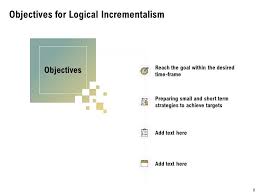The Normative Model of Decision Making
Decision making is a complex process that individuals and organizations engage in on a daily basis. One approach to understanding decision making is through the normative model, which focuses on how decisions should ideally be made rather than how they are actually made.
The normative model of decision making is based on the idea that decision makers should follow a rational and logical process to arrive at the best possible outcome. This model assumes that decision makers have complete information, are able to accurately assess all available options, and can evaluate the potential outcomes of each option.
In the normative model, decision makers are expected to carefully consider all relevant factors, weigh the pros and cons of each option, and choose the option that maximizes their utility or satisfaction. This model is often used in situations where decisions have significant consequences and where there is a clear “best” choice based on objective criteria.
While the normative model provides a useful framework for understanding decision making, it is important to recognize that in reality, decision makers often face limitations such as time constraints, incomplete information, cognitive biases, and emotional influences that can impact their ability to make fully rational decisions.
Despite these challenges, understanding the normative model of decision making can help individuals and organizations strive for better decision-making processes by emphasizing the importance of thorough analysis, careful consideration of options, and logical reasoning in reaching optimal outcomes.
Overall, the normative model serves as a valuable guide for approaching complex decisions with a structured and systematic approach that aims to achieve the best possible results.
Understanding the Normative Model of Decision Making: Key Questions Answered
- What is normative decision-making theory?
- What is the normative modeling approach?
- What is the difference between normative and descriptive decision models?
- What is an example of normative decision theory?
- What are normative and descriptive models of decision-making?
- What is a normative model?
- What is the meaning of normative model?
What is normative decision-making theory?
Normative decision-making theory refers to a theoretical framework that outlines the ideal process of making decisions based on rationality and logic. This theory sets standards for how decisions should be made, emphasizing the importance of considering all available options, evaluating potential outcomes, and selecting the option that maximizes utility or satisfaction. Normative decision-making theory serves as a guide for decision makers to strive for optimal outcomes by following a structured and systematic approach that prioritizes thorough analysis and logical reasoning. While this theory provides a valuable framework for understanding decision making, it is essential to recognize that real-world decision makers often face constraints and biases that can impact their ability to adhere strictly to normative standards.
What is the normative modeling approach?
The normative modeling approach refers to a method of decision making that focuses on determining the ideal or optimal choice based on rational and logical criteria. In this approach, decision makers are expected to consider all available information, evaluate potential outcomes, and select the option that maximizes their utility. The normative modeling approach serves as a guide for making decisions in situations where there is a clear “best” choice based on objective factors. By following this approach, individuals and organizations can strive to make decisions that are logical, well-informed, and aimed at achieving the most favorable results possible.
What is the difference between normative and descriptive decision models?
The key difference between normative and descriptive decision models lies in their focus and approach. The normative model of decision making is concerned with how decisions should ideally be made, emphasizing rationality, logic, and the pursuit of optimal outcomes based on complete information. In contrast, descriptive decision models focus on how decisions are actually made in practice, taking into account the cognitive biases, heuristics, and limitations that individuals often face. While normative models provide a theoretical framework for ideal decision making, descriptive models offer insights into the real-world complexities of decision making processes. By understanding the distinction between these two approaches, individuals can gain a deeper insight into both the theoretical principles and practical realities of decision making.
What is an example of normative decision theory?
An example of normative decision theory is the Expected Utility Theory, which suggests that individuals should make decisions based on the expected value of each option and choose the one that maximizes their utility or satisfaction. This theory assumes that decision makers have complete information, are able to accurately assess probabilities and outcomes, and make choices that align with their preferences. By applying the principles of Expected Utility Theory, individuals can theoretically make decisions that lead to the best possible outcomes based on rational analysis and evaluation of available options.
What are normative and descriptive models of decision-making?
Normative and descriptive models of decision-making are two distinct approaches that provide insights into how decisions are made. The normative model focuses on how decisions should ideally be made, emphasizing rationality, logic, and the evaluation of options to arrive at the best possible outcome. On the other hand, the descriptive model describes how decisions are actually made in practice, taking into account factors such as cognitive biases, heuristics, emotions, and limited information that influence decision makers. By understanding both normative and descriptive models of decision-making, individuals can gain a comprehensive perspective on the decision-making process and work towards improving their ability to make effective and informed decisions in various situations.
What is a normative model?
A normative model is a theoretical framework that outlines the ideal or “norm” way in which decisions should be made. In the context of decision making, a normative model provides guidelines on how individuals or organizations should approach the decision-making process to achieve the best possible outcome. It emphasizes rationality, logic, and systematic evaluation of options to make informed choices that align with objective criteria. By following a normative model, decision makers aim to make decisions that are optimal and based on careful analysis rather than subjective biases or emotions.
What is the meaning of normative model?
The normative model of decision making refers to a theoretical framework that outlines the ideal process for making decisions. In essence, it defines how decisions should be made based on rationality, logic, and the consideration of all available information and options. The normative model sets a standard for decision makers to follow in order to achieve the best possible outcome by emphasizing thorough analysis, careful evaluation of alternatives, and the selection of the option that maximizes utility or satisfaction. By understanding the meaning of the normative model, individuals and organizations can strive to make more informed and rational decisions that align with objective criteria and lead to optimal results.




